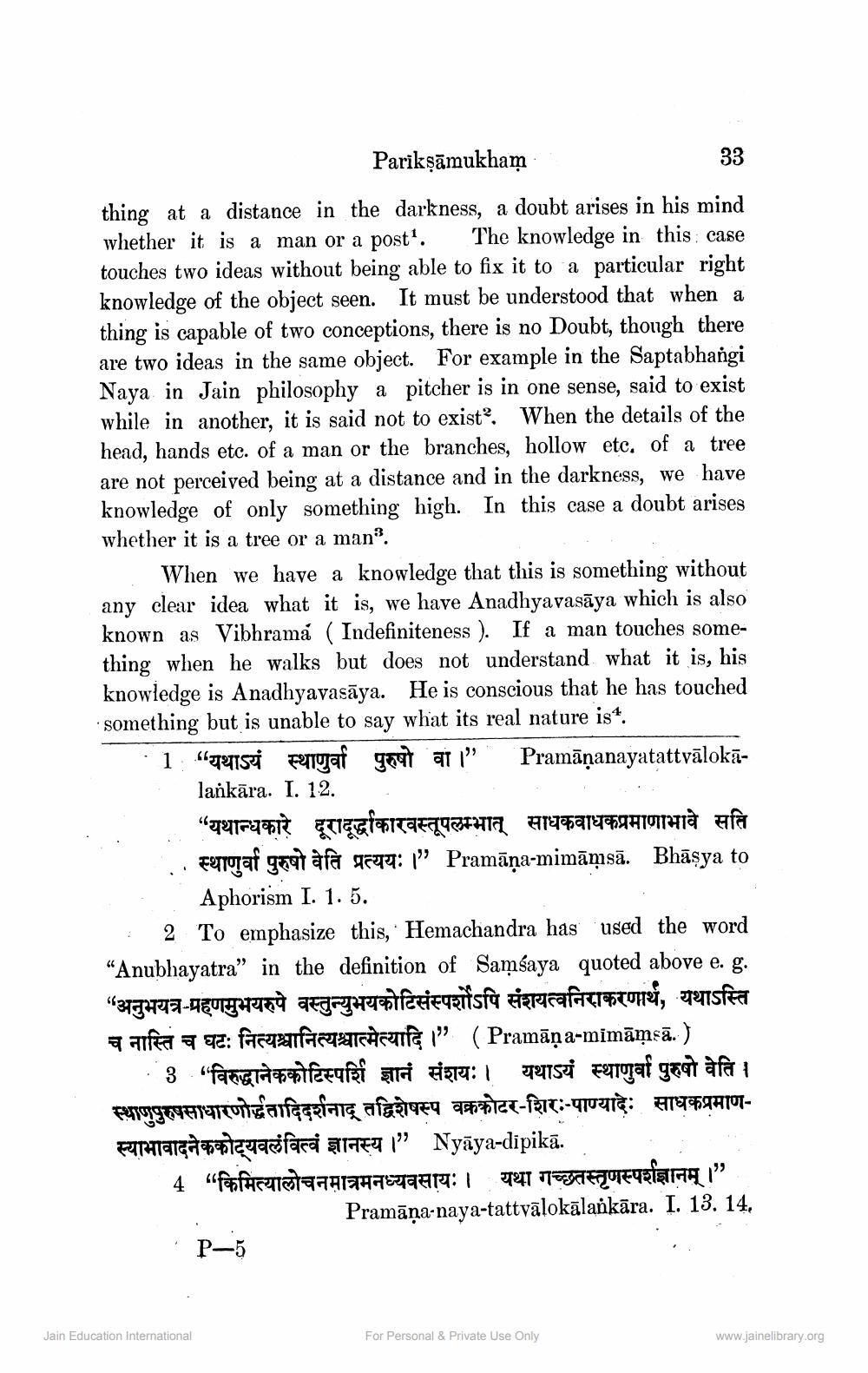________________
Parikşāmukham
33
thing at a distance in the darkness, a doubt arises in his mind whether it is a man or a post'. The knowledge in this case touches two ideas without being able to fix it to a particular right knowledge of the object seen. It must be understood that when a thing is capable of two conceptions, there is no Doubt, though there are two ideas in the same object. For example in the Saptabhangi Naya in Jain philosophy a pitcher is in one sense, said to exist while in another, it is said not to exist’. When the details of the head, hands etc. of a man or the branches, hollow etc. of a tree are not perceived being at a distance and in the darkness, we have knowledge of only something high. In this case a doubt arises whether it is a tree or a man'.
When we have a knowledge that this is something without any clear idea what it is, we have Anadhyavasāya which is also known as Vibhrama ( Indefiniteness ). If a man touches something when he walks but does not understand what it is, his knowledge is Anadhyavasāya. He is conscious that he has touched something but is unable to say what its real nature is . : 1.6791151 Firgaf gaat ar 1" Pramāṇanayatattvālokā
lankāra. I. 12.
“यथान्धकारे दूरादूर्दाकारवस्तूपलम्भात् साधकवाधकप्रमाणाभावे सति :. Ferrogat gaat afat 464a: \" Pramāņa-mimāṁsā. Bhāşya to
Aphorism I. 1.5.
2 To emphasize this, Hemachandra has used the word “Anubhayatra” in the definition of Samśaya quoted above e. g. "अनुभयत्र-ग्रहणमुभयरुपे वस्तुन्युभयकोटिसंस्पर्शोऽपि संशयत्वनिराकरणार्थ, यथाऽस्ति # FIFT T : farceuifFAATCHSTIC I" ( Pramāņa-mimāṁsā.)
• 3 "विरुद्धानेककोटिस्पर्शि ज्ञानं संशयः। यथाऽयं स्थाणुर्वा पुरुषो वेति । स्थाणुपुरुषसाधारणोद्धतादिदर्शनाद् तद्विशेषस्प वक्रकोटर-शिरः-पाण्यादेः साधकप्रमाणFAATAIGN Fri quasi farai alafT/" Nyāya-dipikā. 4 "AFTSTAATHEZA: 1 791 179AELETRIEITHI”
Pramāņa-naya-tattvālokālaňkāra. I. 13. 14,
P-5
Jain Education International
For Personal & Private Use Only
www.jainelibrary.org




